 Treacle Holasz is an emerging Irish, Ukrainian choreographer who combines her eclectic heritage to create comical and engaging physical theatre. Her latest piece ‘Why Fronts: A Contemporary Lap Dance’ is being showcased as part of The Place’s Resolution! 2014 festival.
Treacle Holasz is an emerging Irish, Ukrainian choreographer who combines her eclectic heritage to create comical and engaging physical theatre. Her latest piece ‘Why Fronts: A Contemporary Lap Dance’ is being showcased as part of The Place’s Resolution! 2014 festival.
When did you begin dancing, where and why?
At around the age of 4 my mother’s friend, Lucy, gave us some Tchaikovsky recordings, that I would put on and dance around the room doing faux ballet; I had so much fun that my mother started to take me to ballet classes at our local YMCA. Then, like so many of my dance friends, I regrettably stopped taking classes, and it wasn’t until the age of 12 that I rediscovered my passion for dance and creating movement. My skills were nurtured at The Place as part of the first year of their CAT scheme and their youth company – Shift.
What were your early years of dancing like?
So incredibly fun! One of the reasons I love teaching dance workshops and community projects now is because you can see in others the sheer excitement to learn! I have always been ambitious, from a young age I juggled studying for my GCSEs alongside attending dance classes every night of the week. Thankfully I have wonderfully supportive parents who worked very hard to not only pay for my lessons but drive me to classes. Despite never having experienced contemporary dance themselves, they have always encouraged me. I think it’s really empowering to be young and discover a past time that requires both discipline and creativity.
How long have you been performing? Did you start young?
I was painfully shy, up until the age of 17, so I was really only comfortable when I was performing. I performed throughout my school years, Shift in particular was a great and formative experience; as well making some great lifelong friends I was also given the opportunity to work with incredible choreographers like Martin Lawrence, Tom Dale and Zoi Dimitriou. I continued to perform throughout my training and on graduating performed with The March Performance Group. We were real pioneers, a group of feminists lead by American thinker Kate March. Shortly after, I met Cypriot choreographer Marina Poyiadji and we were commissioned by the European Union in 2012 to create and present a duet in Cyprus entitled ‘DECLARE WHAT’.
This work was an intensely intimate process, working together so closely we were almost able to second guess each others next movement. This collaboration sparked my interest in vocal rhythms of language, a device which I explore more throughly in my latest piece ‘Why-Fronts – A Contemporary Lap Dance’.
Where did you train and what was a typical day like?
I trained for 2 years at Lewisham College. It was fantastically brutal, we were like a dance army, we’d get in for around 8.30am to warm up then have classes from 9am-5pm, then if you were working on choreography you sometimes didn’t get away till 8pm.
I was very privileged to learn under Buddy Watkins and Ragnhild Olsen, both very different but really memorable teachers. After Lewisham I briefly went up to Northern School of Contemporary Dance but I couldn’t leave London so I decided I wanted a choreography based degree, there are some really fantastic university courses. I chose Middlesex University; a typical day was pretty varied but generally speaking you had two technique classes. The choreography classes were always my favourite as from the start there was a clear emphasis on discovering our own choreographic voice. I set up a company in my second year called DRA – we would perform choreographies at London venues to live bands and DJs, and loads of our fellow Middlesex dancers turned up in support. It was and is a really friendly, approachable atmosphere and I’m excited to be teaching a choreography workshop on 3 February at Middlesex, hopefully acting as a springboard for more collaborations in the future!
What is a typical day like now?
Very different, literally every day is different! Freelancing is tough but you feel like you make yourself achieve and every day counts. Rehearsals for my current piece
begin with tea and a quick gossip, then we all lay down, we do a series of set breathings and face warms ups then we start creating noise, warming up our lungs from there we will begin to move first improvised then into our more set material with my wonderful dancers Georges Hans and Charlie Ford. Some days I teach and rehearse with The Meyer Dancers (a 1960’s GoGo group founded by Holasz). Whenever possible I try and a fit in a hot chocolate with my friend Ruby Isla to discuss fun ways to promote my work through social media, and how to spread the word about the various choreographic workshops that I offer, with the aim of enabling others to discover their unique choreographic voice.
Do you still take classes? How do you keep on top of your technique?
When I was at Uni I did take class at The Place, but as a freelancer I can’t commit from one week to the next in case I’m performing or teaching – so I really rely on drop in classes. My personal 2014 resolution is to take up a ballet class again, I think it’s a technique you just fall in love with again as you get older. It’s a bit like being an artist when you learn first draw, you use a pencil, then you get excited by inks, water colours and oil and you sort of take the pencil for granted but without the pencil the painting is arguably a mess so with the discipline of the pencil you find a freedom to be creative. So you could say that Ballet is my pencil, Ha!
What’s the best part of performing?
When you see someone in the audience smile or laugh or even just look you dead in the eye and you think “YES! They get it”. I think it’s far harder to make an audience laugh and connect with you as a human being rather than an unobtainable ‘performer’. I never want to lose sight of the fact that dance should be enjoyable escapism. I’m a born entertainer: if you are paying us money, I want you to go home thinking “We just got entertained.” A personal pet peeve of mine is when I go and see a work and company are so self indulgent that they appear to be enjoying the evening more than the audience.
What piece will you be performing at Resolution!? What is it about?
I’m really proud of this work called ‘Why Fronts: A Contemporary Lap Dance’ (or if you are on the twitter-sphere, #Yfronts). Essentially it is a piece which explores the influence that gender has on society’s attitude towards movement, questioning why certain movements performed by a woman are viewed as provocative, whereas exactly the same movements or pose performed by a man are deemed
animalistic? We are also debating whether the popular but controversial dance form of a lap dance should be considered pro or anti-feminist? My dancers Georges and Charlie had a workshop with acclaimed pole dancer VEGAS (Sasha Allen) in the art of pole and seduction; she has been really influential in the work as she gave us such a frank account of her professional working life.
Which part of contemporary dance do you enjoy most?
I love moving the most, physically dancing. It is a varied and rich style and to an extent it is a misunderstood style that is often under represented – I’d like to see it be given a lot more coverage. I strongly believe that people should be encouraged to feel OK if they “don’t get it”, the wondrous nature of contemporary dance is that is doesn’t have a linear and one dimensional narrative, it isn’t something that needs to be ‘got’ or understood fully, but more emphasis needs to be placed on works being created purely for enjoyment purposes.
What advice would you give to someone aspiring to be part of the dance industry?
Not to listen to advice! There really is no magic recipe or clear path into any creative industry. I think you can carve your own path and make your own opportunities; you don’t always need to rely on platforms or funding awards, put on events with people whose work you dig and venues you love and just make things happen, your way.
What’s next for you? When are you performing at Resolution?
We are performing on 11 February – we really want to have fun with the piece, it’s going to be more like a party than a performance, There’s a strong cultural influence from my Irish Ukrainian heritage so we have a live Bodhran player Tad Sargent joining us, we are also asking some of the audience to join us on stage, then there is talk of vodka shots… My dashing dancers be stripping down to their Yfronts so it really is one for the diary! We both hope to tour the work and also to teach our choreography workshops alongside it to dancers of all abilities. At Holasz Choreography we are all about remembering, creating and having a ruddy good time!
You can keep up to date with future dates, plans and gossip here:
- https://www.facebook.com/holaszchoreography
- or @holaszchoreog on Twitter
Why-Fronts – A Contemporary Lap Dance is part of a triple bill and is being performed alongside Jenni Wren’s Slanjayvah Danza: MinorTears and LCP Dance Theatre’s Am I. For tickets and more information please visit http://t.co/TALKUlBSZ4
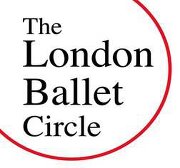 The London Ballet Circle provides financial support to student dancers, raising funds by hosting events such as talks by dancers, choreographers and company directors where members can find out from artists about their life and work. The events of the LBC offer a range of prestigious industry artists as speakers at the events, and the LBC also arranges private visits to ballet schools so members can observe students in training, and their incredible discipline and dedication devoted to their art. All of the LBC events raise vital funds to assist the education of the next generation of talent.
The London Ballet Circle provides financial support to student dancers, raising funds by hosting events such as talks by dancers, choreographers and company directors where members can find out from artists about their life and work. The events of the LBC offer a range of prestigious industry artists as speakers at the events, and the LBC also arranges private visits to ballet schools so members can observe students in training, and their incredible discipline and dedication devoted to their art. All of the LBC events raise vital funds to assist the education of the next generation of talent.
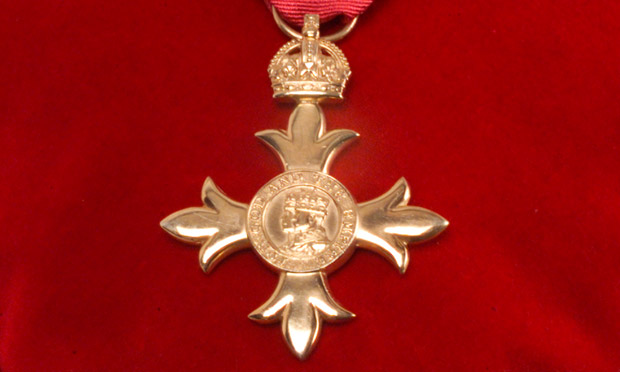 The New Year’s Honours List 2014, released on 30 December 2013, included nine honours for dance professionals, championing their work for the arts sector. Dance UK runs the dance sector’s Honours Advisory Committee which is a group of dance professionals who volunteer their time and expertise to ensure dance professionals are regularly nominated from across the rich and diverse world of dance. Teachers, dancers, managers and choreographers can all be nominated, recognised for their hard work in all dance forms.
The New Year’s Honours List 2014, released on 30 December 2013, included nine honours for dance professionals, championing their work for the arts sector. Dance UK runs the dance sector’s Honours Advisory Committee which is a group of dance professionals who volunteer their time and expertise to ensure dance professionals are regularly nominated from across the rich and diverse world of dance. Teachers, dancers, managers and choreographers can all be nominated, recognised for their hard work in all dance forms.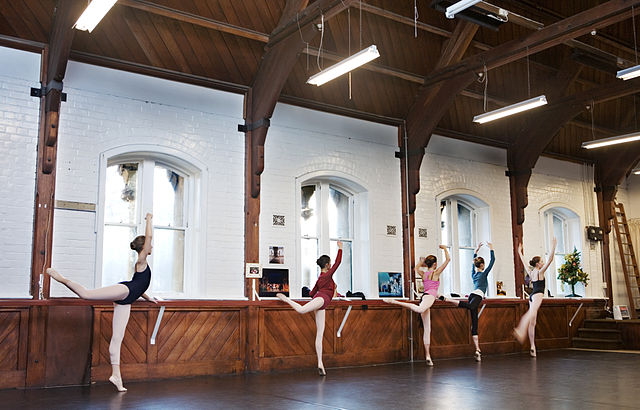
 The Mariinsky Ballet has announced plans for its London season in the summer of 2014: the season will run from 28 July to 14 August at the Royal Opera House, opening with the classic tale Romeo and Juliet. The company will also dance a triple bill of The Firebird, Marguerite and Armand and Concerto DSCH, Swan Lake and a George Balanchine double bill of A Midsummer Night’s Dream – the first time the company has danced this work in the UK – and Apollo. The season will end with the London premiere of Alexei Ratmansky’s Cinderella, a production eagerly awaited by London audiences.
The Mariinsky Ballet has announced plans for its London season in the summer of 2014: the season will run from 28 July to 14 August at the Royal Opera House, opening with the classic tale Romeo and Juliet. The company will also dance a triple bill of The Firebird, Marguerite and Armand and Concerto DSCH, Swan Lake and a George Balanchine double bill of A Midsummer Night’s Dream – the first time the company has danced this work in the UK – and Apollo. The season will end with the London premiere of Alexei Ratmansky’s Cinderella, a production eagerly awaited by London audiences. Treacle Holasz is an emerging Irish, Ukrainian choreographer who combines her eclectic heritage to create comical and engaging physical theatre. Her latest piece ‘Why Fronts: A Contemporary Lap Dance’ is being showcased as part of The Place’s Resolution! 2014 festival.
Treacle Holasz is an emerging Irish, Ukrainian choreographer who combines her eclectic heritage to create comical and engaging physical theatre. Her latest piece ‘Why Fronts: A Contemporary Lap Dance’ is being showcased as part of The Place’s Resolution! 2014 festival.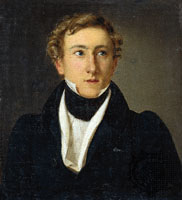 Iconic classical ballet productions such as Swan Lake, La Sylphide, Giselle, and The Sleeping Beauty are all the work of one choreographer: August Bournonville. It is arguable that La Sylphide is perhaps the most internationally famous representative of classical Danish ballet, created by Bournonville and paying homage to the distinct Danish style of classical ballet. The style was prolific, having engendered the ‘Bournonville school’ or ‘Bournonville ballet’.
Iconic classical ballet productions such as Swan Lake, La Sylphide, Giselle, and The Sleeping Beauty are all the work of one choreographer: August Bournonville. It is arguable that La Sylphide is perhaps the most internationally famous representative of classical Danish ballet, created by Bournonville and paying homage to the distinct Danish style of classical ballet. The style was prolific, having engendered the ‘Bournonville school’ or ‘Bournonville ballet’.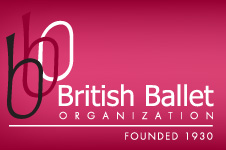 John Travis, the director of the British Ballet Organisation, recently announced significant news which will enable the BBO to develop, secure its future and enhance the support and service provided to its members and the dance profession. It’s current home, Woolborough House, has been a much loved home for the organisation; however the BBO has outgrown the building and it is no longer fit for purpose. After a lengthy and complex process the sale of Woolborough House has been agreed and will be completed early in 2014.
John Travis, the director of the British Ballet Organisation, recently announced significant news which will enable the BBO to develop, secure its future and enhance the support and service provided to its members and the dance profession. It’s current home, Woolborough House, has been a much loved home for the organisation; however the BBO has outgrown the building and it is no longer fit for purpose. After a lengthy and complex process the sale of Woolborough House has been agreed and will be completed early in 2014.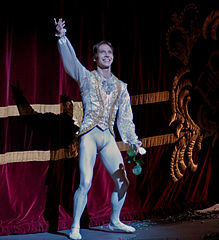 Johan Kobborg has recently been appointed as director of the National Romanian Ballet, taking up his new post in February 2014. This announcement came after the first night of Kobborg’s production of La Sylphide for the company, which opened on 7 December, meaning Kobborg will be at the helm of the company, steering it in an exciting direction.
Johan Kobborg has recently been appointed as director of the National Romanian Ballet, taking up his new post in February 2014. This announcement came after the first night of Kobborg’s production of La Sylphide for the company, which opened on 7 December, meaning Kobborg will be at the helm of the company, steering it in an exciting direction.
 Following injuries, it is paramount that dancers recover as quickly as possible, and diet can particularly aid this. And it’s not just about what you eat, it’s about what you shouldn’t eat too; junk food fills holes without providing any nutrients, just empty calories, and caffeine reduces bone-mineral density and increase fluid loss.
Following injuries, it is paramount that dancers recover as quickly as possible, and diet can particularly aid this. And it’s not just about what you eat, it’s about what you shouldn’t eat too; junk food fills holes without providing any nutrients, just empty calories, and caffeine reduces bone-mineral density and increase fluid loss.